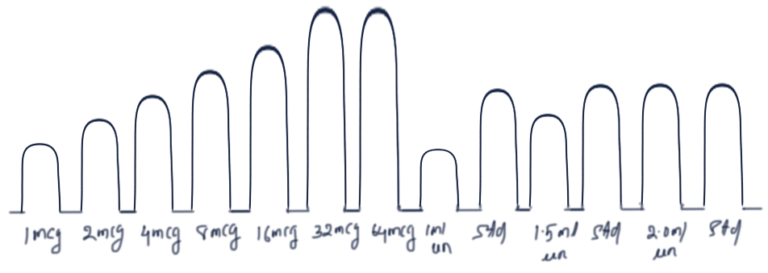BIOASSAY
· Bio-living, assay-test
· It is the process of determining the potency of the drug by using suitable biological system like animals, tissues, microbes etc.
PRINCIPLE OF BIOASSAY
· To compare the test substance with the International Standard preparation (IP, BP, USP) of the same.
· To find out how much test substance is required to produce the same biological effect, as produced by the standard.
APPLICATION
· To determine the potency of a drug.
· To determine the dose of a drug required to produced a therapeutic or toxic response (ED50, LD50).
· This process is used in the development of new molecules or preparation.
CHARACTERISTICS OF A GOOD ASSAY METHOD
· Sensitivity
· Specificity
· Repeatability
· Reproducibility
· Precision
· Accuracy
· Stability – tissue has to stay “bioassay-fit
BIOASSAY CAN BE PERFORMED ON
1. In-vivo → Intact animal
2. In-vitro → isolated tissues, specific cells, organisms.
· WHOLE ANIMALS
o Nor Adrenaline – Spinal Cat
o Cardiac Glycosides – Guinea Pig
o Insulin – Mice
o Estrogens – Ovariectamised Female Rat
· MICRO ORGANISMS
o Vit B12 – Euglena gracilis
o Tetracycline – Bacillus pumilus
· ISOLATED TISSUE
o Acetyl Choline – Frog Rectus Abdominus muscle
o Histamine – Guinea Pig ileum
o Adrenaline – Rat uterus
o Oxytocin – Rat uterus oestrogen primed
· DISPERSED CELLS
o Plasma LH estimation by stimulation of testosterone synthesis – on isolated Leydig cells
TYPES OF BIOASSAY
· There are mainly two types of bioassay;
1. Quantal assay
§ Direct end point assay (DEPA)
§ LD50 determination
2. Graded assay
§ Matching
§ Bracketing
§ Interpolation
§ Multiple point
→ Three point
→ Four point
→ Six point
§ Cumulative dose response














